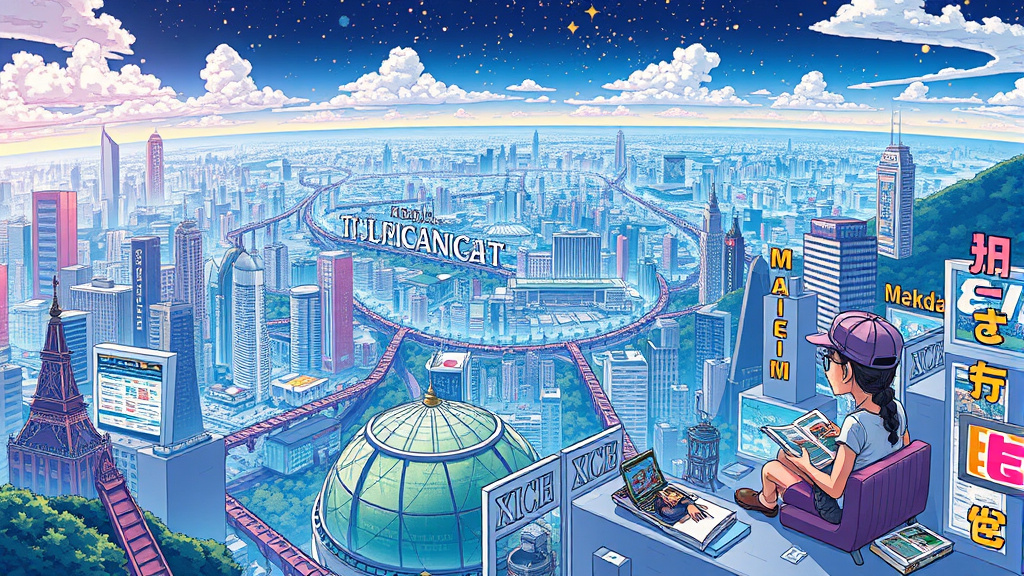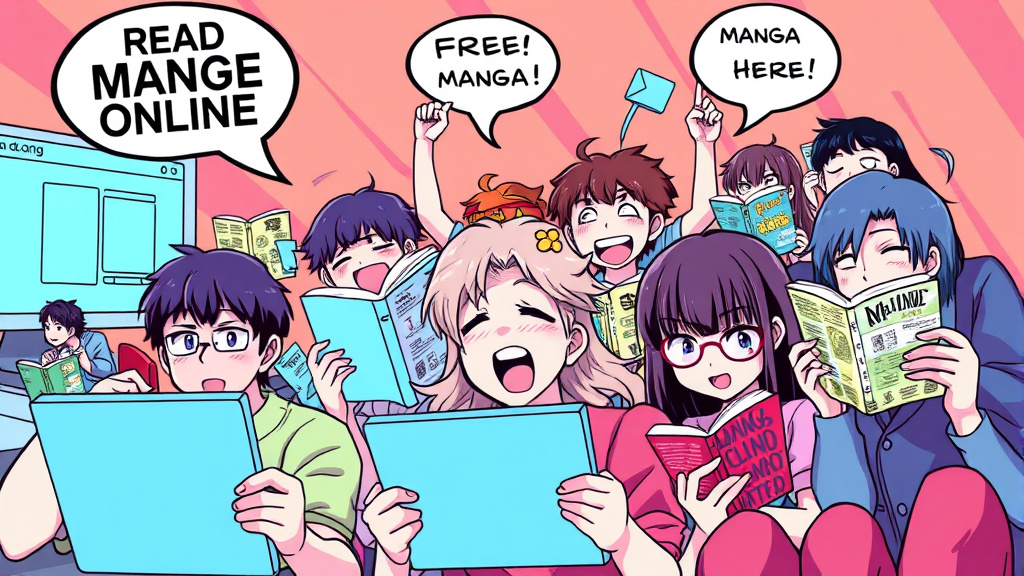digital manga has transformed the landscape of comic storytelling, offering readers worldwide unprecedented access to diverse titles at their fingertips. As the medium continues to evolve, it is redefining how stories are created, distributed, and consumed, ushering in a new era of inclusivity and innovation. Embracing digital manga means more than just switching from print to screen; it involves a revolution that impacts creators, fans, and the industry’s future in profound ways.
Digital manga is at the forefront of this change, providing an accessible portal into the rich and diverse world of Japanese comics, while also opening doors for international audiences and independent creators. This comprehensive exploration delves into the industry’s transformation, comparing platform landscapes, addressing preservation challenges, adapting art styles for digital formats, and envisioning future trends. Join us on a journey to understand how digital manga is shaping the global narrative of manga culture and fandom.
The Rise of Digital Manga - Accessibility, Affordability, and the Future of the Industry
The advent of digital manga has fundamentally altered how audiences access and interact with manga content. Unlike traditional print volumes, digital manga can be instantly downloaded or streamed, providing instant gratification for fans across the globe. This accessibility not only democratizes manga consumption but also significantly reduces costs associated with printing, shipping, and retail markup—making manga more affordable for a broader audience.
Furthermore, the rise of digital manga is fostering a more inclusive environment by extending reach into regions where print distribution faced logistical barriers or high import costs. The future of the industry appears intertwined with technological advancements such as mobile reading apps, cloud storage, and AI-powered recommendation systems. As digital manga continues to grow, it will likely catalyze innovative storytelling methods while empowering creators to reach audiences directly without traditional publishing gatekeepers.
 Hình minh họa: digital manga – read manga high quality
Hình minh họa: digital manga – read manga high qualityNavigating the World of Digital Manga Platforms - A Comparative Analysis
In the digital era, multiple platforms vie for dominance in the manga world, each offering unique features tailored to diverse audiences. Major players like Shonen Jump, ComiXology, and Crunchyroll provide vast libraries with various subscription models, bundling the latest chapters with extensive archives. These platforms differ significantly in their interface design, regional availability, and licensing terms, influencing how fans engage with manga content.
A comparative analysis reveals that while some platforms emphasize exclusive titles or early access to new chapters, others focus on affordability and broad accessibility. For independent creators, platforms like Webtoon or Tapas offer opportunities for serialization and community interaction, contrasting with more mainstream services. The competitive landscape encourages innovation but also raises questions about digital rights management, revenue sharing, and who controls access to manga content. Understanding these differences helps fans and creators navigate the complex ecosystem effectively.

Preserving Manga History in the Digital Age - Challenges and Solutions
As the industry shifts toward digital formats, preserving legacy manga and rare editions becomes a pressing concern. Unlike print copies, digital files can be vulnerable to data corruption, obsolescence, or licensing issues, risking the loss of invaluable cultural artifacts. Archiving manga for future generations requires a coordinated effort among publishers, libraries, and digital archivists.
Solutions such as creating comprehensive digital repositories, employing blockchain for ownership verification, and fostering international collaboration are vital to safeguarding manga history. Additionally, fan-led initiatives, like scanlations and digital libraries, play a role in preserving lesser-known works but must navigate legal considerations. Ultimately, balancing technological innovation with respect for intellectual property will be key in maintaining manga’s cultural legacy in the digital age.
From Print to Pixel - Adapting Manga for Digital Consumption
Transitioning manga from print to digital format involves more than just scanning pages; it requires careful adaptation to optimize reading experiences on various devices. Digital manga must be reformatted for compatibility with smartphones, tablets, and e-readers, often involving significant editing, resizing, and reflowing of artwork to ensure clarity and engagement.
This evolution impacts artistic expression as well. Creators often experiment with new tools and techniques suited for digital creation, such as digital inking and colorization, leading to innovative storytelling methods. Moreover, digital manga offers features like zooming, panel navigation, and multi-layered storytelling, allowing readers to engage deeply with the material. This shift demands a new set of skills from artists and publishers, highlighting the need for continual adaptation in both content and presentation.
The Impact of Digital Manga on Independent Artists and Creators
Digital platforms have democratized manga creation, allowing independent artists and storytellers to reach audiences without the backing of major publishers. This empowerment fosters a diverse array of voices, genres, and experimental narratives, breaking down traditional gatekeeping barriers that once limited aspiring creators.
However, the digital realm also presents challenges around monetization and intellectual property protection. While many independent creators thrive through crowdfunding and ad-supported platforms, ensuring fair compensation remains a complex issue. Nonetheless, digital manga has catalyzed a grassroots movement where creators retain more control, directly engaging with fans and building communities. This shift signifies a cultural renaissance that could redefine the industry’s creative landscape for years to come.
Digital Manga and the Globalized World of Anime and Manga Fandom
The digital age has interconnected manga fans worldwide, creating a truly globalized community that transcends language and cultural barriers. Online forums, social media, and fan translation groups facilitate vibrant exchanges of ideas, fan art, and discussions—spurring a shared passion that fuels manga’s international popularity.
This interconnected fandom influences the industry as well, prompting publishers to pursue official translations and localizations to meet global demand. Digital manga’s accessibility accelerates cultural exchange, allowing diverse audiences to experience stories rooted in Japanese traditions while also inspiring cross-cultural collaborations. As fandom continues to grow online, it will likely drive industry innovations and expand manga’s reach into unexpected territories.
Combating Piracy in the Digital Manga Sphere - Strategies and Effectiveness
Piracy remains a persistent challenge in the digital manga industry, threatening the livelihoods of creators and legitimate publishers. Unauthorized scanlations and illegal streaming undermine revenue streams, making it difficult for companies to sustain investments in new content.
Strategies like legal streaming, affordable pricing models, and region-specific licensing have proven effective in curbing piracy by offering fans accessible and legitimate alternatives. Additionally, technological solutions such as digital rights management (DRM) and watermarking help protect copyrighted material. Engaging with fans transparently and fostering a sense of community around official content are crucial for reducing piracy’s impact. Overall, a balanced approach that combines technological, legal, and ethical strategies will be vital to safeguarding manga’s future.
Digital Manga Translation - Bridging Cultural Gaps and Ensuring Accuracy
Translation plays a pivotal role in connecting manga with global audiences, requiring more than linguistic accuracy; it involves capturing cultural nuances and humor embedded within the original work. Digital manga translation has evolved through fan efforts and professional agencies, striving to balance authenticity with accessibility.
Despite technological advances, challenges persist around maintaining contextual integrity, especially with idiomatic expressions or culturally specific references. Many translation teams now employ collaborative approaches, including consultation with cultural experts, to enhance accuracy. This process is crucial in preserving storytelling integrity while making manga enjoyable for international fans, fostering cross-cultural understanding and appreciation.
The Evolution of Manga Art and Storytelling in the Digital Format
Digital tools have revolutionized manga art, enabling artists to experiment with color, lighting, and dynamic layouts that were difficult with traditional ink and paper. Digital creation software allows for endless edits, layers, and effects, empowering artists to push creative boundaries and develop visually stunning narratives.
Storytelling, too, benefits from digital innovation through interactive formats like webcomics, animated panels, and multimedia integrations. These advancements offer deeper engagement and personalized experiences, such as choosing story paths or accessing supplemental content. As digital manga continues to evolve, it promises to redefine artistic expression and narrative complexity, fostering a new wave of innovative creators who leverage technology to captivate and inspire.
Interactive and Immersive Experiences - The Future of Digital Manga Reading
Looking ahead, digital manga is poised to incorporate immersive technologies such as augmented reality (AR), virtual reality (VR), and interactive interfaces, transforming static reading into richer, multisensory experiences. Imagine donning a VR headset to explore a manga’s universe firsthand or using AR to visualize scenes in your real environment—these innovations could revolutionize how stories are told and experienced.
Such immersive experiences will blur the boundaries between traditional comics and digital gaming, creating dynamic, personalized storytelling adventures. As technology advances, digital manga could become more than just a visual medium but an interactive world where readers participate as active protagonists. This future promises limitless creativity, offering fans entirely new ways to connect with their favorite stories and characters.
Conclusion
The digital manga revolution is reshaping every aspect of how manga is created, distributed, and experienced, opening up opportunities for global accessibility, innovative storytelling, and independent creator empowerment. While challenges like piracy and preservation persist, technological advancements and innovative platforms are paving the way for a more vibrant, inclusive, and dynamic manga industry. As the medium continues to evolve into new formats and immersive experiences, digital manga promises a future where stories reach wider audiences, foster cross-cultural dialogue, and push creative boundaries beyond traditional constraints—making it an exciting era for fans and creators alike.





